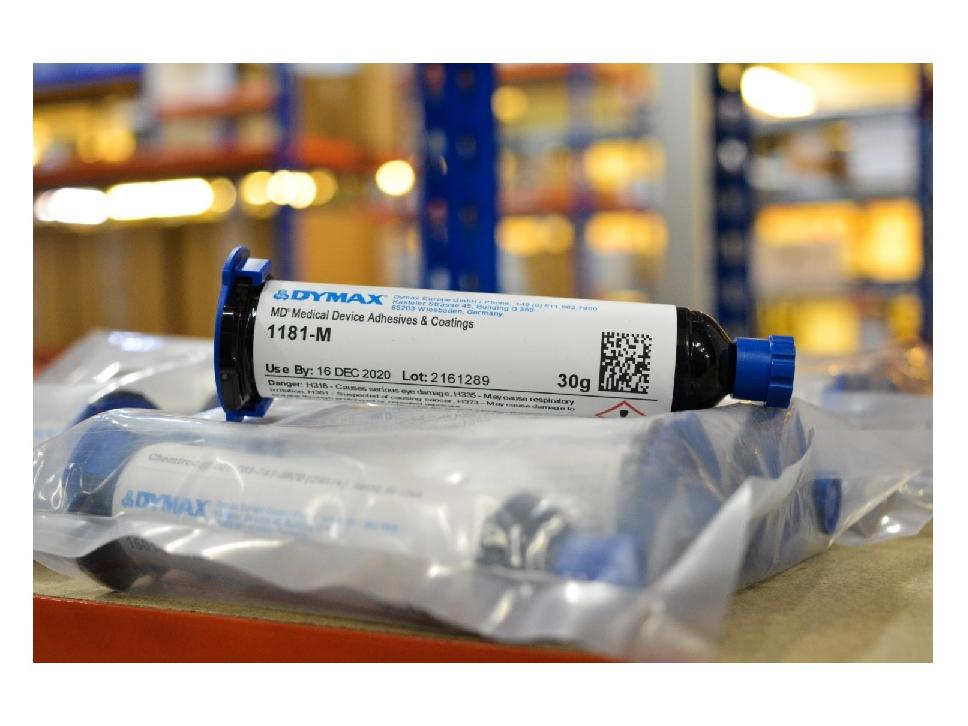
Posted to News on 25th Jan 2022, 08:57
Adhesive selection: race against the clock
How well does an adhesive material fit into your process requirements?

There are numerous considerations when specifying adhesives for any application. Not only are manufacturers looking for an adhesive that bonds well to their required substrates, but one which also meets the functional requirements of its application. In addition to these, there are also time-based considerations to factor in.
INTERTRONICS has been closely examining a number of time-sensitive factors relating to this challenge. The company’s technical white paper, ‘Adhesive selection: a race against the clock?’, goes through the various considerations at play, such as shelf life, working life, pot life and curing time, and highlights how each can impact production line performance.
Shelf life
“The shelf life of an adhesive is the length of time from the date of manufacture during which the material is under warranty to behave according to the technical data sheet, assuming the storage conditions have been met,” says Peter Swanson, managing director, INTERTRONICS, in the white paper. “It often appears on the label as the expiry date – referring to the date that the shelf life ends – or as a manufactured date, where you can find the shelf life and calculate the expiry date.”
An adhesive that remains unused in the original packaging and has been stored under recommended conditions, may begin to see negative effects beyond the shelf life, he adds. “Manufacturers should be aware that the effects can be nearly immediate or be part of a slow decay in performance. Changes in the adhesive may include longer cure time, failure to cure, gelling in the package, changes in viscosity, syneresis/separation or a decrease in performance. After the shelf life, the risk is entirely up to the user.
Evaluation and validation
“Past the expiry date, a quick indicative test would be to check cure speed under your exact process/cure conditions and compare it with your original process evaluation tests on the expired products as you can to see if it still meets the needs of your process. A guide would be the testing you did initially to validate the adhesive in the application – the ultimate arbiter of suitability of the adhesive for your application.”
The conditions the adhesive is stored in can affect the shelf life. “For best results, store your adhesives according to the manufacturer’s recommendations,” advises Swanson. “Choosing an adhesive with limited shelf life will mean working with a supplier with an appreciation of the inevitable supply chain challenges.”
Working life and pot life
While pot life and working life are often taken to mean the same thing, there are distinctions between the two, he adds. “Both, however, refer to the period of time after mixing or preparing an adhesive for use during which the material remains suitable for application.
“Adhesives based on chemistries like epoxy, polyurethane and methacrylate are often two-part systems; once mixed, the clock starts ticking, cure commences and the material starts to thicken, meaning viscosity increases. In this case, pot life is a data point liked by chemists, as it is defined as the amount of time it takes for an initial mixed viscosity to double, and it is something they can measure. There are variations on this theme – the test is affected by the mass of the material mixed and the temperature, so these factors should either be standardised or detailed (e.g. 100 grams mixed at 25C) if you want to make comparisons.
“Many thermoset materials will generate heat (exotherm) and increase the temperature during cure. Since this exotherm is related to the mixed mass, the more you mix, the shorter the pot life. UV curing adhesives, which are typically single part and require no mixing, might be said to have an indefinite pot life.
Working life
“Working life, on the other hand, is the amount of time a mixed material remains low enough in viscosity so that it can still be readily applied to a part or substrate in your application, with the appropriate accuracy and tolerance – it is application dependent. Size and shape of bond line, geometry, orientation and even dispensing/dosing methodology will all play a role.”
To see the full white paper, click here.
https://www.intertronics.co.uk/wp-content/uploads/2021/01/wp21-2-adhesive-selection-a-race-against-the-clock.pdf





